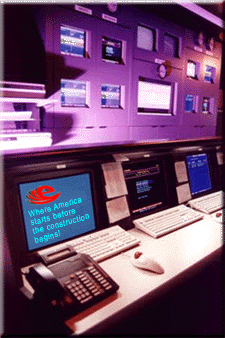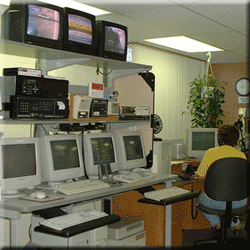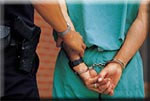
Service Information
Remote Site Monitoring
When it comes to tower site monitoring systems, you can select from a large list of options. At locations with lighting, you can chose from basic monitoring products that will notify you or your monitoring company of strobe or incandescent system alarms. The FAA requires that light failures or “alarms” be reported to their organization within 30 minutes of learning of the failure. Repairs must be made within 15 days and logs must be kept of all events.
Some monitoring systems include diagnostic capabilities that will allow you to dial in on any lighting system to find out the exact nature of the alarm. This capability helps you to avoid unnecessary visits and will provide you with the repair parts needed prior to mobilizing repair technicians. They can also detect and report repetitive or intermittent problems which each status change resulting in a notification. A lighting monitoring system can significantly reduce the risk of serious fines and potential liability. Industry reports say that 50% of alarms are false in nature.
Other monitoring systems allow the site owner to monitor:
- Auxiliary power and fuel levels

- High and low temperatures for the room and equipment
- Entry and exit access
- Intrusion and motion alarms
- Wind speeds
- Humidity sensors
- Smoke and fire
- Transmit forward power
- Antenna reflected power
- Antenna VSWR
Alarms and data can be transmitted via GSM, PCS, wireless, satellite, phone line, microwave or fiber optic.
No news was not good news
It is important that your lighting monitoring system allows you to check the proper performance of the tower’s lighting every 24 hours. The FAA has fined owners as much as $10,000 for having monitoring systems that were not working. The owners ineffectively argued that their monitor checked the system each day, but they were unaware of a failure because their modem had been disabled by a power surge. Some monitoring firms have computer generated systems that will contact the monitoring system every day and provide a NoCom if a handshake is not provided.
 Monthly monitoring pricing for incandescent and medium intensity lighting ranges from $30.00 to $40.00. High intensity lighting monitoring will be higher. Some firms will archive all data for up to three years including FAA notifications, tracking data, repairs made and other site information. Monthly monitoring pricing for incandescent and medium intensity lighting ranges from $30.00 to $40.00. High intensity lighting monitoring will be higher. Some firms will archive all data for up to three years including FAA notifications, tracking data, repairs made and other site information.
We recommend that you contact our valued remote site monitoring specialists to obtain additional information about their products and services.
FCC sets tower owner/licensee responsibilities
The antenna structure owner is responsible for maintaining the painting and lighting in accordance FCC regulations. However, if a licensee or permittee authorized on an antenna structure is aware that the structure is not being maintained in accordance with FCC regulations, or has reason to question whether the antenna structure owner is carrying out its responsibility, the licensee or permittee must take immediate steps to ensure that the antenna structure is brought into compliance and remains in compliance. The licensee must:
(1) Immediately notify the structure owner;
(2) Immediately notify the site management company (if applicable);
(3) Immediately notify the FCC; and,
(4) Make a diligent effort to immediately bring the structure into
compliance.
In the event of non-compliance by the antenna structure owner, the Commission may require each licensee and permittee authorized on an antenna structure to maintain the structure, for an indefinite period, in accordance with the Antenna Structure Registration (FCC Form 854R).
FAA monitoring requirements:
The FAA requires that obstruction lighting systems should be closely monitored by visual or automatic means. It is extremely important to visually inspect obstruction lighting in all operating intensities at least once every 24 hours on systems without automatic monitoring. In the event a structure is not readily accessible for visual observation, a properly maintained automatic monitor should be used. This monitor should be designed to register the malfunction of any light on the obstruction regardless of its position or color.
When using remote monitoring devices, the communication status and operational status of the system should be confirmed at least once every 24 hours. The monitor (aural or visual) should be located in an area generally occupied by responsible personnel. In some cases, this may require a remote monitor in an attended location. For each structure, a log should be maintained in which daily operations status of the lighting system is recorded.
Beacon lenses should be replaced if serious cracks, crazing, dirt build up, etc., has occurred.
Thefts, vandalism can be thwarted by intrusion monitoring
With copper at its highest price in many years, the nation has seen a dramatic increase in the number of ground buss bar and  transmission line thefts from tower sites. Brazen thieves have been known to pull up to a site in daylight in populated areas and remove ground systems and coaxial cable. Although authorities have arrested some of the people responsible for multiple thefts, it hasn't stopped the rising number of sites that have been stripped. Many carriers and site owners are adding site monitoring equipment to curtail thefts and vandalism. transmission line thefts from tower sites. Brazen thieves have been known to pull up to a site in daylight in populated areas and remove ground systems and coaxial cable. Although authorities have arrested some of the people responsible for multiple thefts, it hasn't stopped the rising number of sites that have been stripped. Many carriers and site owners are adding site monitoring equipment to curtail thefts and vandalism.
|